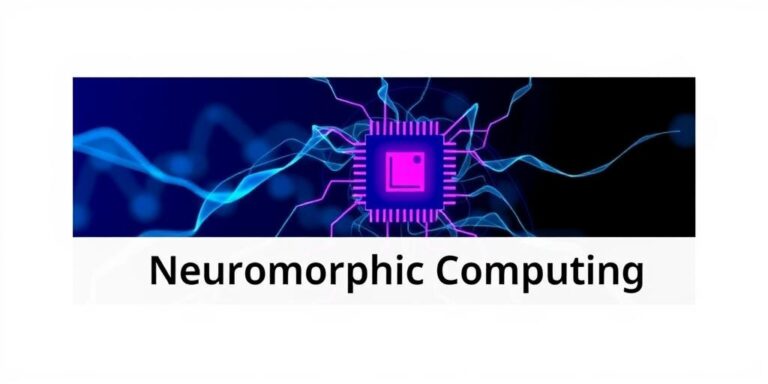Neuromorphic Computing for AI: Brain-Inspired Hardware (Beyond 2025)
Neuromorphic computing represents a paradigm shift in artificial intelligence (AI) hardware. Unlike conventional computers that process information sequentially, neuromorphic systems mimic the structure and function of the human brain. This approach promises to overcome limitations in energy efficiency and processing speed that currently plague AI applications. Looking beyond 2025, neuromorphic computing is poised to revolutionize various fields, from robotics and autonomous systems to healthcare and data analytics.
What is Neuromorphic Computing?
Neuromorphic computing aims to create computer chips that operate more like the human brain. Key features include:
- Spiking Neural Networks (SNNs): Instead of transmitting continuous signals, SNNs communicate using discrete spikes, similar to neurons in the brain. This event-driven processing reduces energy consumption.
- Memristors: These devices act as artificial synapses, changing their resistance based on the history of the electrical current passing through them. Memristors enable the creation of dense, energy-efficient neural networks.
- Parallel Processing: Neuromorphic chips are designed to perform computations in parallel, mimicking the brain’s massively parallel architecture. This allows for faster processing of complex tasks.
Advantages of Neuromorphic Computing
Compared to traditional computing architectures, neuromorphic systems offer several key advantages:
- Energy Efficiency: Neuromorphic chips consume significantly less power than conventional processors, making them ideal for mobile and embedded applications.
- Real-time Processing: The parallel architecture of neuromorphic systems enables faster processing of sensory data, making them suitable for real-time applications like robotics and autonomous driving.
- Fault Tolerance: Like the brain, neuromorphic systems are inherently fault-tolerant. They can continue to function even if some components fail.
- Adaptive Learning: Neuromorphic systems can learn and adapt in real-time, making them well-suited for tasks that require continuous learning and adaptation.
Applications Beyond 2025
Neuromorphic computing is expected to have a significant impact on various fields in the coming years:
- Robotics: Neuromorphic chips can enable robots to process sensory information more efficiently, allowing them to navigate complex environments and interact with objects in a more natural way.
- Autonomous Systems: Self-driving cars, drones, and other autonomous systems can benefit from the real-time processing capabilities of neuromorphic computing.
- Healthcare: Neuromorphic systems can be used to analyze medical images, monitor patient health, and develop personalized treatments.
- Data Analytics: Neuromorphic chips can accelerate the processing of large datasets, enabling faster insights and better decision-making.
Challenges and Future Directions
Despite its potential, neuromorphic computing still faces several challenges:
- Hardware Development: Building neuromorphic chips is a complex and challenging task. More research is needed to develop reliable and scalable neuromorphic hardware.
- Software Development: Developing algorithms and software tools for neuromorphic systems is still in its early stages. More research is needed to develop efficient programming models and software libraries.
- Integration: Integrating neuromorphic chips into existing systems can be challenging. More research is needed to develop standard interfaces and protocols.
Looking ahead, research efforts are focused on:
- Developing new materials and devices for neuromorphic computing.
- Creating more efficient and scalable neuromorphic architectures.
- Developing new algorithms and software tools for neuromorphic systems.
- Exploring new applications for neuromorphic computing.
Conclusion
Neuromorphic computing represents a promising approach to AI hardware. By mimicking the structure and function of the human brain, neuromorphic systems offer significant advantages in terms of energy efficiency, processing speed, and fault tolerance. As research and development efforts continue, neuromorphic computing is poised to play an increasingly important role in AI applications beyond 2025.




